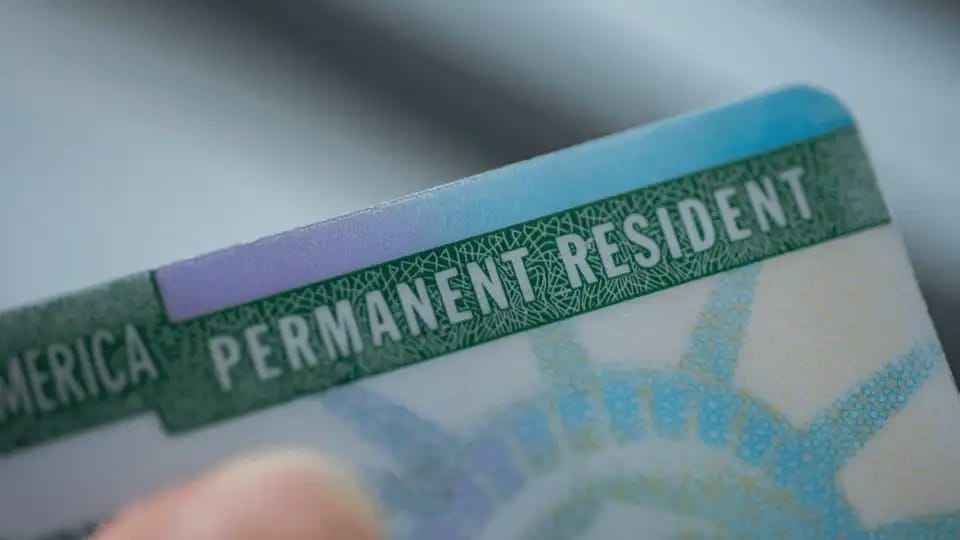
The United States is currently facing a significant challenge in its immigration system: a massive backlog in green card processing. This issue affects millions of immigrants, particularly skilled professionals from countries like India and China. The backlog not only disrupts the lives of these individuals and their families but also has broader implications for the U.S. economy and its global competitiveness.
Understanding the Green Card Backlog
A green card grants lawful permanent residency in the U.S., allowing individuals to live and work permanently. However, the current system has led to an unprecedented backlog, especially in employment-based categories.
- Employment-Based Green Cards: As of 2023, there are approximately 1.8 million pending employment-based green card applications. Over 1.1 million of these are from Indian nationals, who face the longest wait times due to per-country caps.
- Per-Country Caps: U.S. immigration law limits each country to 7% of the total number of green cards issued annually. This cap disproportionately affects countries with high numbers of applicants, like India and China, leading to extended wait times for their citizens.
Internal links: Learn the basics of Employment-Based Green Cards → /us-employment-based-green-card · Compare EB-2 vs EB-3 → /eb2-eb3
Impact on Individuals and Families
Indian nationals are disproportionately affected by the green card backlog. They account for more than 75% of the U.S. backlog list.
- Extended Wait Times: Some Indian professionals may wait decades, with estimates suggesting it could take up to 134 years to process all current applications.
- Family Separation: Children of applicants, known as “documented dreamers,” risk aging out of eligibility for dependent visas, leading to potential family separations.
- Career and Life Uncertainty: The prolonged waiting period causes significant stress and uncertainty, affecting career progression and personal life decisions.
Economic Consequences
The backlog doesn't just impact individuals; it has broader economic implications:
- Talent Drain: Skilled professionals stuck in the backlog may seek opportunities in other countries with more straightforward immigration processes, leading to a loss of talent for the U.S.
- Economic Loss: A report from the Bipartisan Policy Center estimates that clearing the green card backlog could boost the U.S. GDP by $3.9 trillion over the next decade.
- Innovation Stagnation: Industries reliant on skilled immigrants, such as technology and healthcare, may face shortages, hindering innovation and growth.
Policy Challenges and the Need for Reform
Several factors contribute to the backlog:
- Annual Caps: The limit of 140,000 employment-based green cards per year is insufficient to meet current demand.
- Per-Country Limits: The 7% cap per country doesn't account for the varying sizes of applicant pools from different countries.
- Administrative Delays: Processing inefficiencies and bureaucratic hurdles further exacerbate the backlog.
Efforts to reform the system have faced political challenges. Proposals to increase caps or eliminate per-country limits have stalled in Congress, leaving many applicants in limbo.
Proposed Solutions
- Eliminating Per-Country Caps – The Fairness for High Skilled Immigrants Act aims to remove per-country limitations on employment-based visas, ensuring a more equitable distribution based on application date.
- Recapturing Unused Green Cards – Proposals suggest reclaiming unused green cards from previous years to reduce the backlog.
- Increasing Annual Caps – Raising the number of green cards issued annually can help meet the current demand.
- Streamlining Administrative Processes – Improving efficiency in processing applications can reduce delays.
Internal link: Speak with our team about priority dates, downgrades (EB-2→EB-3), and strategy → /contact-us
Conclusion
The green card backlog is a pressing issue that affects millions of individuals and has significant economic implications for the United States. Addressing this crisis requires comprehensive immigration reform that considers the realities of global talent mobility and the needs of the U.S. economy. By increasing annual caps, revising per-country limits, and streamlining administrative processes, the U.S. can better manage its immigration system, retain global talent, and strengthen its position in the global economy.
FAQs
1) Why do Indians and Chinese nationals wait so much longer for green cards?
The 7% per-country cap limits visa issuance regardless of demand. Since India and China have large applicant pools, priority dates move slowly, creating multi-decade backlogs in EB-2/EB-3.
2) What can reduce my wait time—does EB-2 to EB-3 “downgrade” help?
In some years, EB-3 advances faster than EB-2. A strategic downgrade may help, but depends on your priority date, occupation, and Visa Bulletin movements. Get a tailored plan: /contact-us.
3) Will recapturing unused visas make a real difference?
Yes. Recapture can inject tens of thousands of visas immediately into the system, easing pressure on backlogged categories and improving final action dates.
4) How does this backlog affect U.S. competitiveness?
Prolonged waits fuel talent flight to countries with faster residency pathways, hurting innovation, productivity, and GDP—which is why many stakeholders urge urgent reforms.



